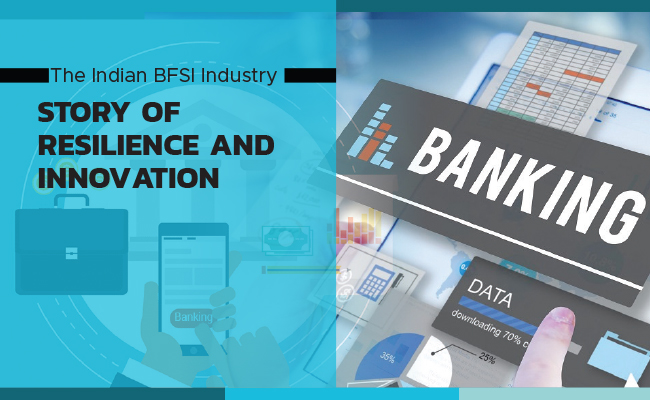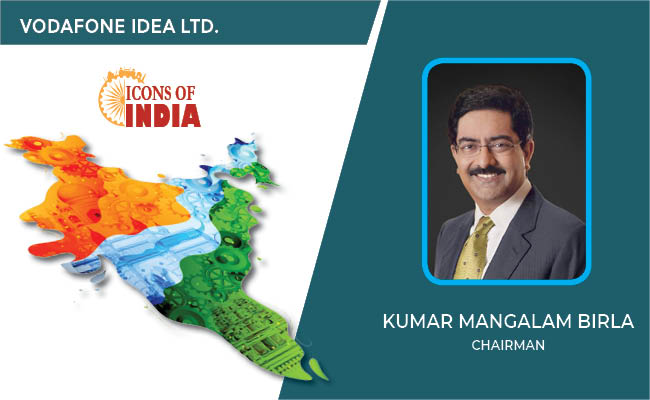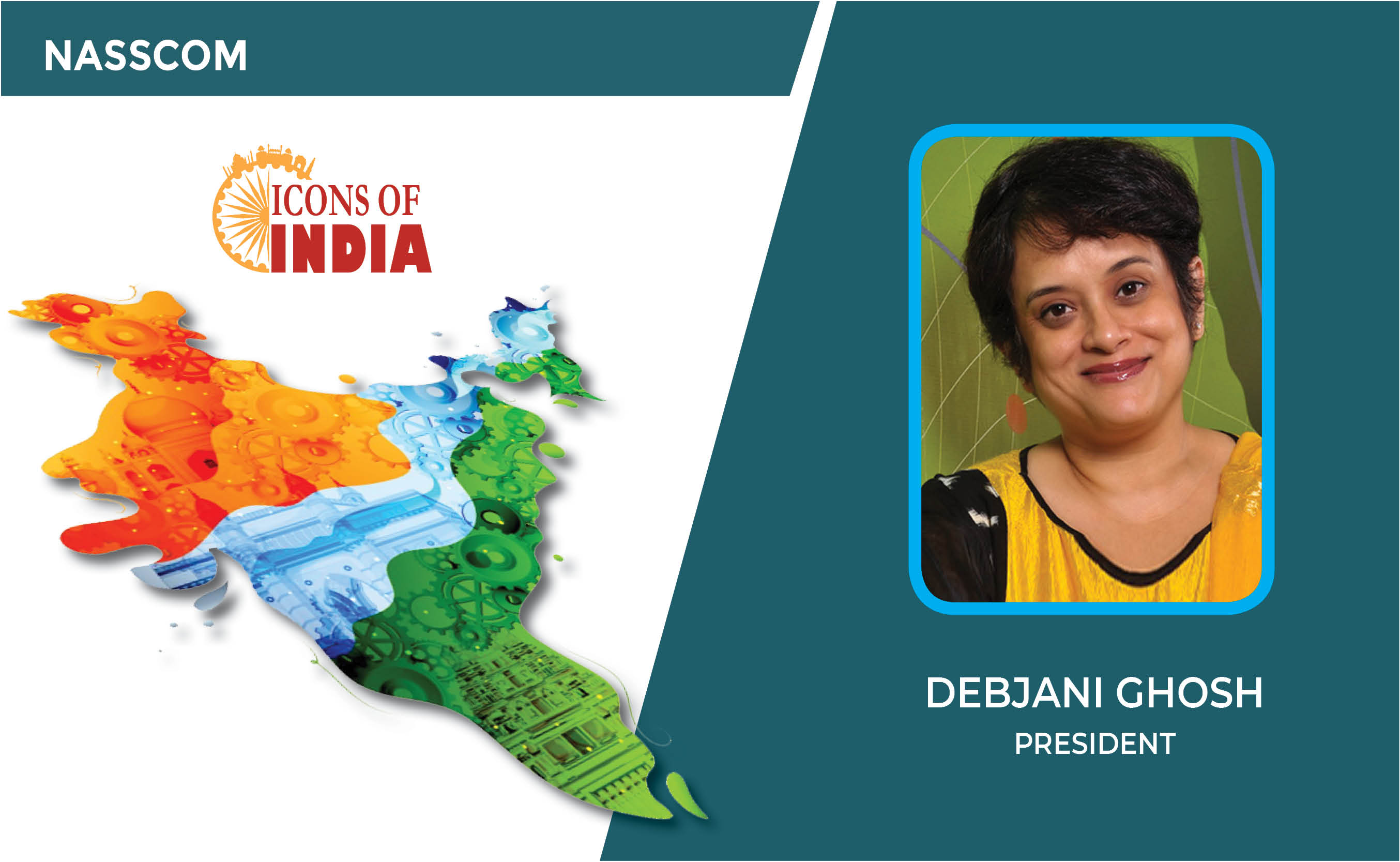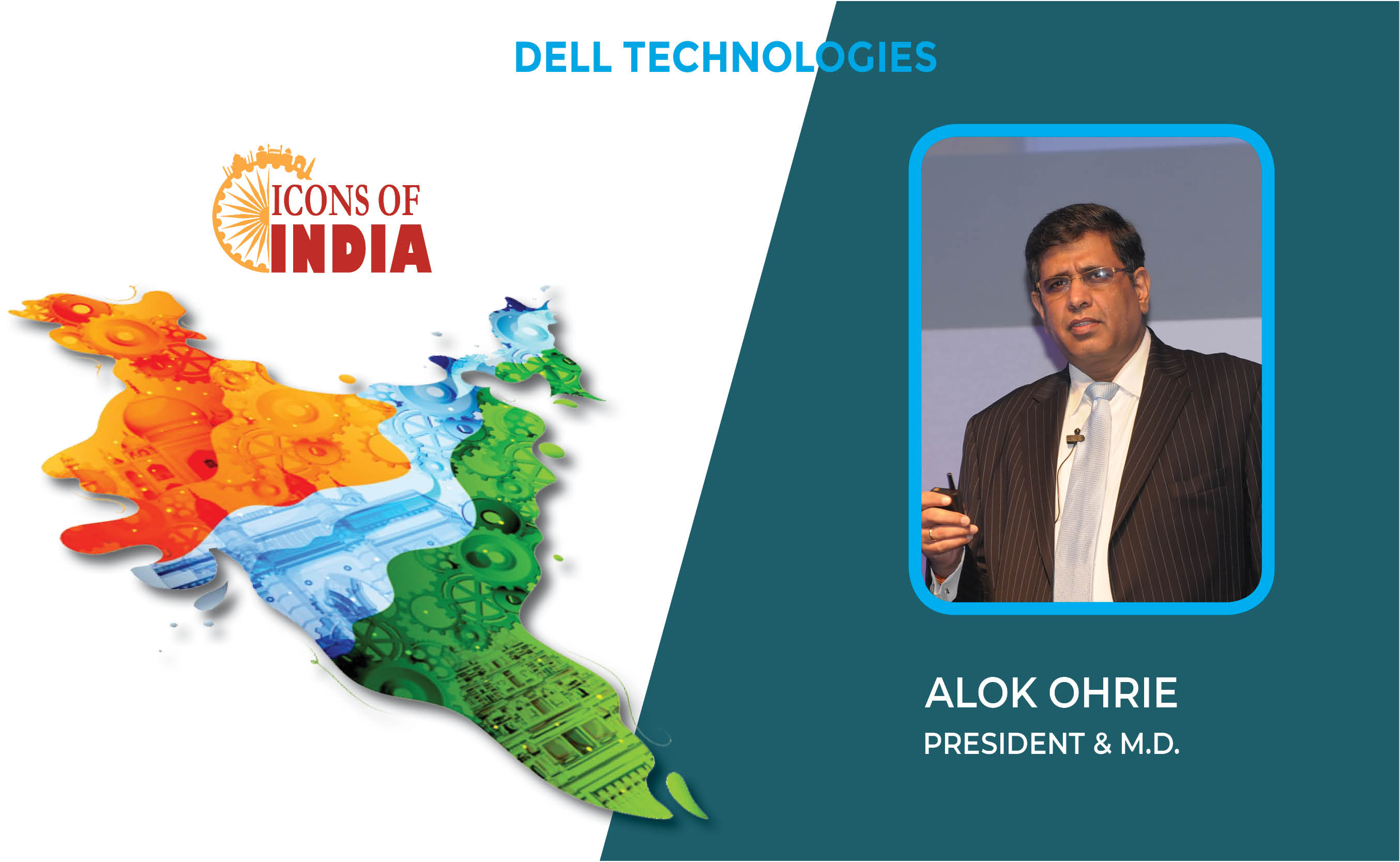Story of Resilience and Innovation
By MYBRANDBOOK

The Banking, Financial Services, and Insurance (BFSI) sector in India stands as a cornerstone of the nation’s economic infrastructure, playing a critical role in supporting economic growth, stability, and financial inclusion. Over the years, this sector has undergone significant transformations, driven by regulatory changes, technological advancements, and evolving consumer preferences. The year 2023 was particularly noteworthy, marked by robust growth, digital innovation, and increased regulatory scrutiny.
In 2023, the BFSI sector demonstrated remarkable resilience amidst global economic uncertainties and domestic challenges. The sector continued to expand its reach, enhance service quality, and innovate through digital transformation initiatives. Major financial institutions, including banks, non-banking financial companies (NBFCs), and insurance providers, focused on leveraging technology to improve customer experience, streamline operations, and mitigate risks.
The government and regulatory bodies, including the Reserve Bank of India (RBI), the Securities and Exchange Board of India (SEBI), and the Insurance Regulatory and Development Authority of India (IRDAI), played pivotal roles in shaping the sector’s trajectory through policy reforms aimed at strengthening financial stability, promoting transparency, and encouraging financial inclusion.
The Market
The Indian BFSI sector saw substantial growth in 2023, building on the momentum from 2022. According to data from the RBI, the total assets of scheduled commercial banks grew from INR 173 trillion in December 2022 to INR 183 trillion by March 2024. This growth was driven by increased lending, higher deposit mobilization, and the proliferation of digital banking services.
Banking Sector
The banking sector experienced robust growth in both retail and corporate lending. Total credit extended by banks increased from INR 118 trillion in December 2022 to INR 125 trillion by March 2024. The growth in retail lending was primarily driven by increased demand for home loans, personal loans, and vehicle loans, supported by low-interest rates and favorable economic conditions. Corporate lending also saw a resurgence, with banks focusing on sectors such as infrastructure, manufacturing, and services.
Bank deposits grew from INR 140 trillion in December 2022 to INR 148 trillion by March 2024, reflecting strong deposit mobilization efforts and increased consumer confidence in the banking system. The introduction of innovative deposit schemes, attractive interest rates, and enhanced customer service contributed to this growth.
Digital banking continued to gain traction, with a significant increase in the adoption of online and mobile banking services. The number of digital transactions surged, driven by the widespread use of Unified Payments Interface (UPI), internet banking, and mobile banking apps. Banks invested heavily in digital infrastructure, cybersecurity, and fintech collaborations to enhance the customer experience and improve operational efficiency.
Non-Banking Financial Companies (NBFCs)
NBFCs played a crucial role in bridging the credit gap for underserved segments, including micro, small, and medium enterprises (MSMEs), and rural and semi-urban populations. The total assets of NBFCs grew from INR 40 trillion in December 2022 to INR 45 trillion by March 2024.
NBFCs, particularly those focused on microfinance and MSME lending, saw significant growth. The microfinance sector expanded its loan portfolio by 18%, reaching INR 2.5 trillion by March 2024. MSME lending by NBFCs grew by 20%, driven by increased demand for working capital and business expansion loans.
Housing finance companies (HFCs) also experienced robust growth, with the total housing loan portfolio increasing by 15% to INR 12 trillion by March 2024. The government’s focus on affordable housing and the introduction of subsidized housing schemes played a pivotal role in this growth.
Insurance Sector
The insurance sector saw considerable expansion, driven by rising awareness about the importance of insurance, increased penetration in rural areas, and innovative product offerings. The total premiums collected by the insurance industry grew from INR 6 trillion in December 2022 to INR 7 trillion by March 2024.
The life insurance segment experienced a 12% growth in premiums, with total premiums reaching INR 4.5 trillion by March 2024. The introduction of flexible, customer-centric products, along with digital distribution channels, contributed to this growth. The sector also saw a significant increase in the adoption of term insurance and unit-linked insurance plans (ULIPs).
The general insurance segment grew by 14%, with total premiums reaching INR 2.5 trillion by March 2024. Health insurance continued to be the fastest-growing segment within general insurance, driven by increased health awareness and the impact of the COVID-19 pandemic. The sector also saw growth in motor insurance, driven by higher vehicle sales and regulatory mandates.
Major Developments
2023 was a year of significant developments for major financial institutions in India. Each segment of the BFSI sector—banks, NBFCs, and insurance companies—undertook strategic initiatives to strengthen their market positions and enhance service offerings.
SBI
State Bank of India (SBI), the largest public sector bank, continued to dominate the market with its extensive branch network, strong digital presence, and diverse product offerings.
SBI’s loan book grew by 12% in 2023, driven by robust growth in retail loans, particularly home and personal loans, and increased demand for corporate credit. The bank’s total advances reached INR 30 trillion by March 2024.
SBI invested significantly in digital initiatives, including the enhancement of its YONO platform, which saw a 20% increase in user base, reaching 60 million users by March 2024. The bank also launched several AI-driven customer service initiatives and chatbots to improve customer experience.
HDFC Bank
HDFC Bank, the largest private sector bank, maintained its leadership position through innovative products, superior customer service, and a strong focus on digital banking.
HDFC Bank’s loan book grew by 15%, with significant contributions from retail loans and SME lending. The bank’s deposits increased by 13%, supported by competitive interest rates and innovative deposit schemes.
HDFC Bank continued to enhance its digital offerings, including mobile banking, internet banking, and payment solutions. The bank’s digital transactions accounted for 85% of total transactions by March 2024. HDFC Bank also focused on fintech collaborations and investments in digital infrastructure to enhance its service offerings.
Bajaj Finance
Bajaj Finance, a leading NBFC, continued to expand its presence across various lending segments, including consumer finance, SME lending, and commercial lending.
Bajaj Finance’s consumer finance portfolio grew by 18%, driven by strong demand for personal loans, consumer durable loans, and two-wheeler loans. The company’s total assets under management (AUM) reached INR 2 trillion by March 2024.
Bajaj Finance invested heavily in digital transformation, including the enhancement of its mobile app and online lending platforms. The company introduced several AI-driven credit assessment tools to improve lending efficiency and customer experience.
LIC
Life Insurance Corporation of India (LIC), the largest life insurer, continued to dominate the life insurance market with a strong focus on expanding its product portfolio and enhancing customer service.
LIC’s total premiums grew by 10%, reaching INR 2.7 trillion by March 2024. The company saw significant growth in its term insurance and pension plans, driven by increased awareness and demand for financial security.
LIC focused on enhancing its digital presence through its e-services platform, which saw a 25% increase in user base. The company also introduced several digital tools for policy management and claim settlement to improve customer experience.
ICICI Lombard
ICICI Lombard, a leading general insurer, focused on expanding its health and motor insurance segments while enhancing its digital capabilities.
ICICI Lombard’s total premiums grew by 15%, reaching INR 250 billion by March 2024. The health insurance segment was the key driver of growth, followed by motor insurance.
ICICI Lombard invested in digital platforms for policy purchase, renewal, and claim settlement. The company also launched AI-driven tools for risk assessment and fraud detection to enhance operational efficiency and customer service.
Major Announcements and Strategic Initiatives
2023 witnessed several major announcements and strategic initiatives in the Indian BFSI sector, including mergers, acquisitions, partnerships, and policy reforms.
Axis Bank and Citi’s Consumer Business: One of the most notable mergers was Axis Bank’s acquisition of Citi’s consumer banking business in India. This strategic move expanded Axis Bank’s customer base and product portfolio, particularly in the wealth management and credit card segments.
Fintech Collaborations: Banks and NBFCs increasingly partnered with fintech companies to enhance their digital offerings and improve customer experience. HDFC Bank’s collaboration with leading fintech startups to develop innovative payment solutions and lending products was a key highlight.
RBI’s Digital Currency Initiative: The RBI’s initiative to explore and pilot a Central Bank Digital Currency (CBDC) marked a significant step towards digital innovation in the financial sector. The pilot project aimed to assess the feasibility and impact of CBDCs on monetary policy and financial stability.
IRDAI’s Sandbox Regulations: The IRDAI introduced new sandbox regulations to encourage innovation in the insurance sector. These regulations allowed insurance companies to test new products and services in a controlled environment, promoting experimentation and innovation.
Outlook for 2024
The outlook for the Indian BFSI sector in 2024 remains positive, driven by continued economic growth, technological advancements, and favorable regulatory developments. Key trends expected to shape the sector include:
Digital Transformation: The BFSI sector will continue to focus on digital transformation, with increased investments in AI, blockchain, and cybersecurity. Digital banking, online lending, and insurtech are expected to see significant growth.
Financial Inclusion: Efforts to enhance financial inclusion will remain a priority, with a focus on expanding financial services to rural and underserved areas. Government initiatives and partnerships with fintech companies will play a crucial role in achieving this goal.
Sustainable Finance: The growing emphasis on environmental, social, and governance (ESG) factors will drive the adoption of sustainable finance practices. Banks and financial institutions will increasingly integrate ESG criteria into their lending and investment decisions.
Regulatory Developments: Regulatory bodies will continue to play a key role in shaping the sector through policy reforms and guidelines aimed at promoting financial stability, transparency, and consumer protection.
The Indian BFSI sector in 2023 demonstrated resilience and innovation, adapting to economic challenges and leveraging digital advancements to drive growth. With a positive outlook for 2024, the sector is poised to continue its trajectory of expansion and transformation, contributing significantly to India’s economic development and financial inclusion goals.


Legal Battle Over IT Act Intensifies Amid Musk’s India Plans
The outcome of the legal dispute between X Corp and the Indian government c...

Wipro inks 10-year deal with Phoenix Group's ReAssure UK worth
The agreement, executed through Wipro and its 100% subsidiary,...

Centre announces that DPDP Rules nearing Finalisation by April
The government seeks to refine the rules for robust data protection, ensuri...

Home Ministry cracks down on PoS agents in digital arrest scam
Digital arrest scams are a growing cybercrime where victims are coerced or ...


Icons Of India : Kumar Mangalam Birla
Aditya Birla Group chairman Kumar Mangalam Birla recently made a comeb...

Icons Of India : Debjani Ghosh
Debjani Ghosh is the President of the National Association of Software...

Icons Of India : ALOK OHRIE
Alok Ohrie leads Dell Technologies’ India business, overseeing Sales...


C-DAC - Centre for Development of Advanced Computing
C-DAC is uniquely positioned in the field of advanced computing...

DRDO - Defence Research and Development Organisation
DRDO responsible for the development of technology for use by the mili...

PFC - Power Finance Corporation Ltd
PFC is a leading financial institution in India specializing in power ...


Indian Tech Talent Excelling The Tech World - Dheeraj Pandey, CEO, DevRev
Dheeraj Pandey, Co-founder and CEO at DevRev , has a remarkable journe...

Indian Tech Talent Excelling The Tech World - REVATHI ADVAITHI, CEO- Flex
Revathi Advaithi, the CEO of Flex, is a dynamic leader driving growth ...

Indian Tech Talent Excelling The Tech World - NIKESH ARORA, Chairman CEO - Palo Alto Networks
Nikesh Arora, the Chairman and CEO of Palo Alto Networks, is steering ...
 of images belongs to the respective copyright holders
of images belongs to the respective copyright holders